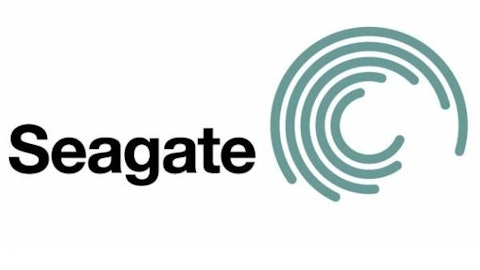What Should HDD Makers Do?
If disk manufacturers are serious about getting into the flash drive business, they have to have their own controller operation. Advanced controller functionality is needed to turn its raw relatively useless working life into a product that will last for five years or so.
Seagate announced its strategic partnership with DensBits, a maker of solid state drive controllers, for this purpose. Western Digital is out in the relative controller cold with its mostly embedded SSD business. It needs to develop or buy in technology if it is to expand out of that niche. With the emergence of cheaper 3-bit per cell flash (TLC), not having such a controller means Western Digital can’t ship TLC-based drives and competitors will undercut the company on pricing.
Secondly, the only way to get certainty of flash chip supply is by having a flash fab relationship. Money is the seal on such alliances. Seagate has such an alliance with Samsung and they will build on their alliance. But where is Western Digital — out in the cold again.
Seagate Perfectly Positioned for NAND Flash with the Virident Deal
The steps taken by Seagate as mentioned above enabled the company delivering Pulsar SSDs and hybrid disk drives, while Western Digital has only promised a niche embedded SSD business. Seagate’s initiative to become a prominent player in the booming solid state NAND storage industry has set the company at a high growth path.
Seagate has not been as successful with flash drives as SanDisk Corporation (NASDAQ:SNDK), OCZ, Micron, LSI, Fusion-io and other flash storage suppliers. SanDisk has been the global leader in Flash Memory Storage technology, and is one of the most preferred brands in NAND chips for mobile devices (SD cards). A recent report stated that the market for SD cards is estimated to reach $21.3 billion by 2018, and SanDisk looks well poised to take advantage of the global growth potential.
While SanDisk isn’t a big player in the SSD game, it does expect the drives to account for more of its profits as a greater number of device-makers use them instead of traditional hard disk drives. As I stated above, Ultrabooks are expected to account for a major boost in SSD production, as companies flock to the drives for their thinner profiles and speedy boot-up times.
With the Virident deal announced recently, Seagate’s flash drive business is set to skyrocket. With a $40 million investment in Virident Systems, Seagate has moved into the PCIe SSD space with one of the highest-performing products available serving both Seagate and Virident well. In fact Seagate can emerge as a tough competitor for even SanDisk going forward.
Conclusion
It’s quite clear that Seagate is aiming at the high margin, high ASP segments of the market, with an emphasis on enterprise flash. Western Digital is lagging way behind. I would recommend buying Seagate’s stock at the current price level.
The article Which Storage Company Is Better Positioned for NAND Flash? originally appeared on Fool.com and is written by Anindya Batabyal.
Copyright © 1995 – 2013 The Motley Fool, LLC. All rights reserved. The Motley Fool has a disclosure policy.




